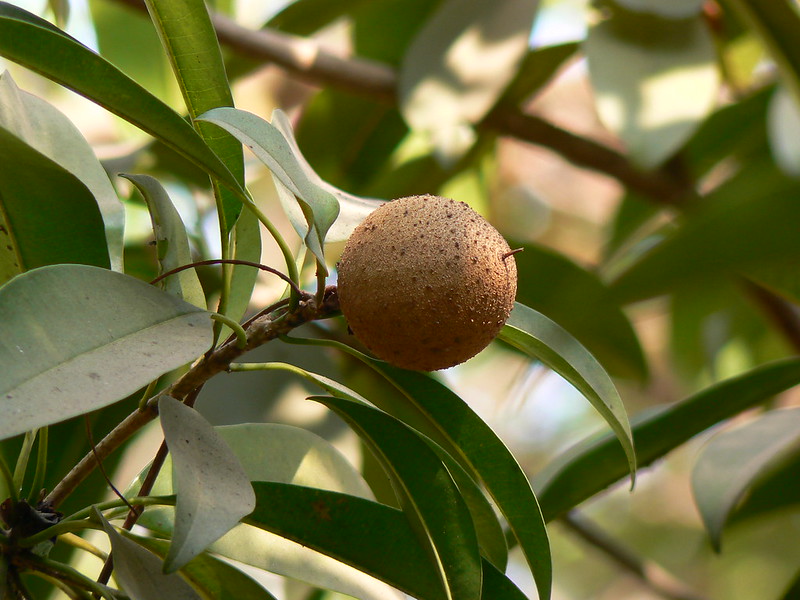| Binomial |
Manilkara zapota (L.) P. Royen |
| Family |
Sapotaceae |
| Tamil name |
சப்போட்டா (Sapota) |
| Habit |
Medium to large evergreen tree and wind resistant |
| Bark |
Round dense crown, rich in white gummy latex (chicle) |
| Flowers |
Small, bell shaped, pale yellow, borne on the slender stalks at the leaf bases and are
clustered at the apex |
| Fruits |
Globose, rusty, hard and gummy when immature, sweet, juicy and scented when ripe |
| Flowering period |
February to June |
| Pollinators |
Honey bees |
| Native to Central America |
The fruit also commonly known by the name chikoo is delicious and offers an array of benefits for hair, skin, and health. The milky latex from the tree trunk was once important in the chewing gum industry. The fruit is used to make smoothies and shakes, and in various dessert applications as well. The
fruit is also a good source of dietary fibre. The fruit also plays a major role in body weight maintenance. Seed paste applied to bite or sting wounds due to poisonous animals. The wood is an excellent material for making cabinets and furniture. On the Western coast of India where Chikoo is abundant, the city of Dahanu holds an annual Chikoo Festival to draw tourists and tropical fruit lovers from around the region. |
| Location on campus: |
https://maps.app.goo.gl/kM5ngkfvCmwNrbGX9 |
